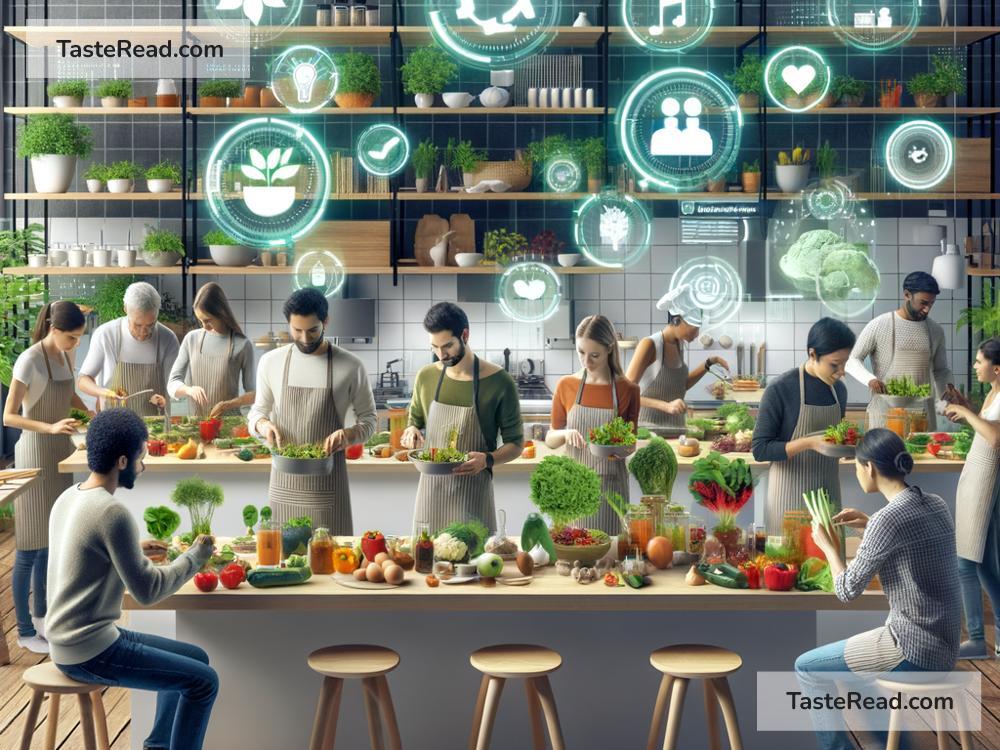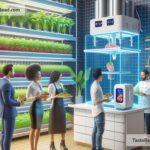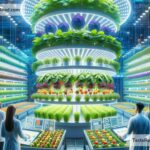The Future of Food and Participatory Systemic Systems: Changing How We Eat and Grow Together
Food is one of the most important parts of our lives. It’s not just about eating—it’s about health, culture, the environment, and how we connect with each other. But as the world grows and changes, the way we produce, distribute, and consume food needs to evolve. The future of food isn’t just about technology or new farming methods; it’s also about people working together to create fair, sustainable, and inclusive systems.
That’s where “participatory systemic systems” come into play. These systems ask for input and action from everyone involved—from farmers to scientists, policymakers to consumers. Let’s take a closer look at how food is changing and how participatory systems can play a key role in shaping the future.
The Challenges We Face Today
Our global food system is facing big challenges:
-
Feeding a Growing Population: The world’s population is expected to reach nearly 10 billion by 2050. How will we produce enough food to feed everyone?
-
Climate Change: Rising temperatures, unpredictable weather, and environmental degradation make farming harder. Droughts, floods, and soil erosion threaten crops around the globe.
-
Unequal Access to Food: Millions of people still go hungry every day, while others waste food or have access to more than they need. This inequality creates gaps in health and well-being.
-
Loss of Biodiversity: The way we grow food has reduced the variety of plants and animals. This makes our food system less resilient to disease, pests, and changes in climate.
-
Health Problems: Processed foods and unhealthy eating habits have led to growing rates of obesity, diabetes, and other health issues.
To solve these problems, we need bold ideas and new ways of working together. One promising approach is participatory systemic systems.
What Are Participatory Systemic Systems?
Participatory systemic systems are built on collaboration. Instead of a few people making decisions for everyone, these systems involve all stakeholders—people who are directly affected by the process and outcome. With participatory systems, everyone has a voice, and solutions are designed together.
For example, instead of only big companies deciding what food gets grown, farmers, consumers, scientists, and community leaders can work together. Their teamwork builds a fairer and more sustainable food system.
These systems look at the big picture. They examine how growing, distributing, and eating food are connected. By addressing these connections, participatory systems aim to fix problems holistically, rather than piecemeal.
How Technology Could Shape the Future of Food
Technology is transforming the way we think about food. From lab-grown meat to vertical farming, innovations are making it possible to grow and produce food in ways we couldn’t imagine before. But technology alone isn’t enough. We need systems that ask for widespread feedback and include diverse perspectives.
Here are some examples of how participatory systems intersect with technological advancements:
-
Smart Farming Tools: Farmers can use sensors and AI (artificial intelligence) systems to monitor crops and soil health more effectively. But participatory systems go a step further by ensuring farmers have access to these tools and asking farmers how the data can work best for their needs.
-
Food Distribution Innovations: Apps that connect surplus food from restaurants and stores to people in need are helping reduce waste. Participatory systems could expand these ideas by involving local communities to design better strategies for reducing waste.
-
Lab-Grown Foods: Meat and dairy products created in labs could reduce the need for factory farming, which harms the environment. Participatory systems could help address concerns like affordability, accessibility, and cultural acceptance of these new products.
-
Blockchain for Transparency: Blockchain technology can track food from farm to table, ensuring safety and ethical practices. Using participatory systems, organizations can work with farmers, distributors, and customers to make transparency tools understandable and useful for all.
When technology meets collaboration, we get solutions that are not only innovative but also inclusive and effective.
The Role of Communities in Changing Food Systems
One of the most exciting aspects of participatory systems is how they empower communities. People everywhere can take a hands-on role in shaping their local food systems. Some ways communities are already doing this include:
-
Community Gardens: These allow neighbors to grow food together, share knowledge, and create a local, sustainable food source.
-
Farmers Markets: Buying food directly from small-scale farmers supports local economies and builds relationships between growers and consumers.
-
Policy Advocacy: Communities can organize to push governments for fair farming policies, better food access, and funding for sustainable practices.
By working together, individuals can make big changes that ripple across larger systems.
The Future Starts With Us
The way we eat and grow food will keep changing. But at the heart of this change is an opportunity to work together. Instead of letting big corporations or governments make all the decisions for us, participatory systemic systems give everyone a chance to shape the future.
The systems that feed us should reflect our values: fairness, sustainability, and health for everyone. By making space for diverse voices, embracing technology, and building connections between communities, we can create a food system that works for people and the planet.
The future of food isn’t just about solving problems—it’s about transforming our relationship with it. Together, we can grow smarter, eat healthier, and share more with one another. And the best part? The journey is something every individual and community can be a part of.


